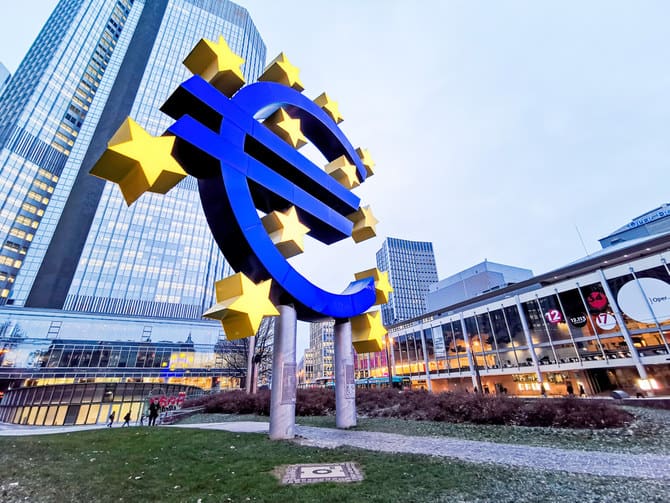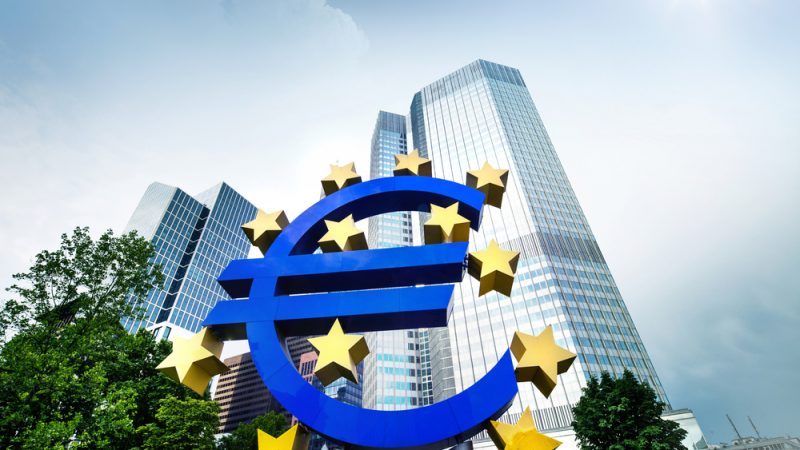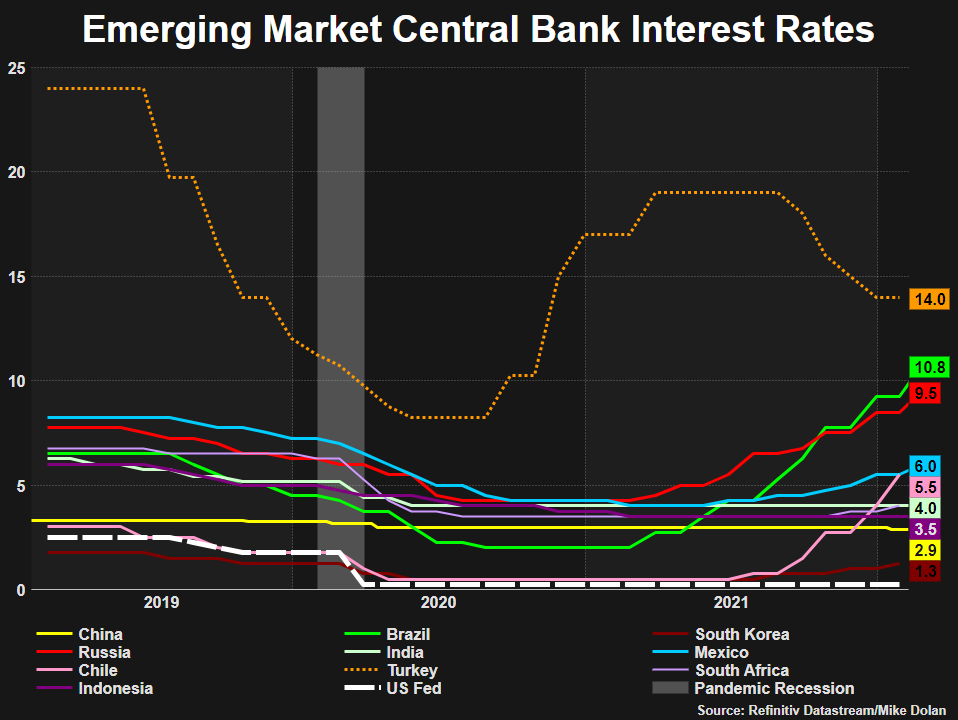Central bank interest rates and inflation: two giants locked in an endless dance. To keep the economy steady, central banks tweak interest rates, aiming to keep inflation just right—not too high, not too low. Think of it like a thermostat; too much heat and the market overheats, too little and we’re stuck in a chill. As your guide, I’ll show you just how these calculated moves work magic on the economy. Trust me, once you see the behind-the-scenes of this financial balance act, you’ll look at your savings in a whole new light. Let’s dive in and decode this intricate relationship together.
Understanding the Relationship Between Central Bank Interest Rates and Inflation
Interest Rates as a Tool for Inflation Control
Central banks adjust rates to manage inflation. Higher rates can cool an overheating economy. Lower rates can fuel growth when the economy slows. Such changes can affect how much we all spend and save.
How Interest Rate Adjustments Influence Inflation Rates
Interest rate moves directly affect inflation. When rates go up, loans get more costly. This slows down borrowing and spending. People and businesses then buy less. This cools down price hikes. When rates drop, borrowing costs less. More loans mean more spending. Then, demand goes up and so can prices. Simple, right?
Now, let’s dive deeper into this dance between rates and inflation to really grasp it.
When central banks see prices soaring too high, they step in. They use what’s called a contractionary monetary policy. This means they raise interest rates. Think of it like stepping on the brakes in a speeding car. It slows the economy down. People have less money to spend because loans cost more. With less money being tossed around, fewer goods are bought. Demand falls, and so do prices. It can help, but if they hit the brakes too hard, the economy might stall. This is a delicate balance they need to play with.
If prices are too low, that’s also a problem. It can lead to what we call deflation. That’s when prices drop instead of rise. Sounds good? Not always. It can mean that the economy is in trouble. When deflation hits, central banks may cut rates to spark things up. This is expansionary monetary policy. It’s like hitting the gas pedal. Businesses can borrow more easily. They can invest and hire more people. Then, folks have jobs and money to spend. Demand goes up and so can prices. With just the right tap on the gas, the economy can hum along nicely.
Keeping inflation in check is central banks’ big goal. They aim for price stability. This means they want things to cost about the same over time, no wild swings up or down. They focus on numbers like the consumer price index to watch prices. They also make sure not to let inflation get too high. We call this inflation targeting.
Controlling inflation is not just about today’s prices. It’s also about what we all expect prices to be in the future. If we think prices will leap up tomorrow, we may spend more today. This can push prices up even faster.
I’ll tell you, watching all this is like seeing a game where the rules keep changing. And these central banks, they don’t just guess. They study heaps of data. They want to make the best moves for our wallets and the whole economy.
We can’t forget how all this touches your life. Higher rates mean your savings might grow more, but borrowing for a house or car can pinch your pocket. Lower rates can be great for getting a loan, but don’t expect much from savings.
Now, these rate adjustments sound simple. But throw in things like global trade, political events, or a pandemic, and the central banks’ job gets tough. They juggle many balls to keep our money’s value steady. Phew, that’s some brainy stuff they do.
Alright, we peeked inside the central bank’s tool kit and saw how they tinker with rates to steady prices. Stay tuned as we explore more of how these big banks play their part in keeping our economy on track.
The Role of Major Central Banks in Economic Stability
The Federal Reserve and its Approach to Rate Decisions
Think of the Federal Reserve like a pilot. It steers the economy using a big tool: interest rates. Now, rate decisions come from tons of data and trends that tell them how our economy is doing. They adjust rates thinking about jobs, prices of things we buy, and how much money moves around.
When prices go up too fast, the Fed often raises rates. This makes borrowing costlier, and folks may spend less. It’s like tapping the brakes on a car speeding down a hill. This is to keep our money’s value steady, so we can plan our budgets without surprise costs.
But if business is too slow, the Fed might cut rates. Cheaper loans can spark business and get more people jobs. Think of this like pressing a car’s gas pedal to climb a steep road.
ECB and Bank of England: Inflation Targeting in Practice
Now, let’s hop across the pond to see how others do it. The ECB, Europe’s central bank, and the Bank of England have a clear goal: keep inflation low, near a target number. This helps everyone know what to expect about prices and money value.
They change interest rates to hit their inflation target. It’s a bit like a game where you try to hit the bullseye. Too far over, and things can get costly. Under it, and the economy might stall out. They want to land it just right to keep things smooth.
These banks work hard to keep balance. When inflation rates spike, they might hike up rates. It means loans cost more, but it helps cool off those rising prices. If prices fall too low, which can scare off spending, they might cut rates. This can encourage us to buy and invest more.
In all this, central banks and their policies are vital. They can shift gears with interest rate adjustments, guide where the economy heads, and care for our money’s worth. Moreover, they make sure that prices do not swing too wild, avoiding what’s called a deflationary spiral where falling prices could lead to less work and even less spending.
And they don’t do this in the dark. They review tons of info, like the consumer price index, which is like a shopping basket of everyday things we buy. It shows how much more (or less) our cash can buy over time.
These central banks don’t just look at home, though. They also keep an eye on what happens worldwide, as it all ties together. Say another country’s economy takes a hit; it can ripple back to us.
Lastly, these big banks talk about what they’re thinking. This forward guidance can help companies and families make better plans for spending and saving. By being open, central banks build trust and guide us towards making smart money moves.
Central banks like the Fed in the U.S., the ECB in Europe, and the Bank of England in the U.K. do some heavy lifting to keep our economies running right. And while the way each one works is a little different, they all aim for stable prices so that our money stays reliable for buying tomorrow what we can buy today.
Analyzing the Current Inflation Dynamics
The Impact of Interest Rate Hikes and Cuts on the Economy
Interest rates are like a car’s brakes and gas. Central banks change these rates. Why? To control how fast or slow our economy goes. When prices fly up, it’s like the car speeding. Central banks hike rates to slow things down. This makes loans cost more. Folks and businesses then spend less. This slows inflation.
What if the economy slows too much? Central banks may cut rates. This makes loans cheaper. Then, people and firms can spend more. More spending can help the economy grow. But be careful! If it grows too fast, prices might zoom up again.
Consumer Price Index Analysis and Inflation Reports
The Consumer Price Index (CPI) tracks how much stuff costs. It checks prices of a lot of goods and services. This includes things like food, clothes, and cars. If CPI goes up, it means prices go up. This is called inflation. Central banks watch the CPI closely. They use CPI reports to decide on interest rates.
If the CPI climbs, central banks think of hiking rates. This keeps prices from rising too fast. A steady CPI means prices are stable. That’s good for us all. We want enough money to buy what we need. Banks use CPI to make sure that can happen.
Central banks aim for price stability. Not too high, not too low. They want our money to have consistent power. This way, we all can plan and not worry too much about future costs. When they get it right, we have a balance. We get jobs, goods to buy, and prices we can handle.
Controlling inflation is like walking a tightrope. Central banks must be careful. One wrong move and stuff can get costly, or the economy may stall. They study hard, looking at many things. Not just at fancy reports, but at what we all do every day. They look at how we shop, work, and save. They aim to keep our financial world rolling smooth.
Central banks have a big job. They must keep an eye on prices and jobs. They must make sure there’s just enough money moving around. Too much money can push prices up. Not enough, and jobs might go away. They use interest rates to help find a safe path for us all to follow.
Interest rates and the economy dance together. Central banks lead this dance. They must listen to the music and watch the floor. It’s not easy. They change the tempo with rate hikes and cuts. The goal is a rhythm where everyone can dance. A place where prices don’t jump too fast, but the economy still moves ahead.
In the end, it’s all about balance. Keeping the economy and prices just right takes skill. And that’s what central banks work on, every single day. They keep their eyes on numbers and on us, trying to make the right calls at the right time.
Strategies for Managing Inflation Expectations
Interest Rates and Their Effect on Purchasing Power and Loan Costs
Interest rates can make or break your wallet. I’ve seen it time and again: when central banks hike rates, borrowing costs go up. This can slow down people buying things and cool down prices. Think of it like a brake on a speeding car. Christmas is coming, but with high rates, that new bike for your kiddo might cost more if you buy with a loan.
When the Federal Reserve or other central banks decide to adjust interest rates, they’re sending a message. If rates go up, they’re saying, “Let’s slow down.” This can happen when inflation is too high, and prices for your bread, milk, or car are climbing too fast. But if rates go down, it’s more like, “Let’s juice up the economy.” Cheaper loans can make it easier for you to start a business or buy a new house.
The whole goal is price stability. We all need stable prices to plan our spending, right? If you don’t know what your dollar will be worth, how can you buy that coffee machine you’ve been eyeballing?
The Efficacy of Expansionary and Contractionary Monetary Policies
Now, let’s get real about these fancy terms. Expansionary policy? It’s about growth. Central banks drop rates, making loans cheap. This can spark business and jobs, building a strong economy like a robust tree growing leaves. But too much, and prices might soar, making your dollar weaker.
Contractionary policy is the opposite. Central banks hike rates, loans cost more, and growth slows. It’s like trimming the tree so it doesn’t hit power lines and cause a mess. Tight control can tame that wild price dance, keeping your dollar steady and strong.
Figuring out the right move is tough, like landing a plane in a storm. Central banks look at a lot — like job numbers, how much folks spend, and how factories are doing. They keep a sharp eye on the Consumer Price Index too, which tells you how much more expensive life has gotten over a year.
Decide wrong, and we might get stuck with high prices or even a scary deflation, where prices drop but nobody’s buying. On the flip side, there’s a terror called hyperinflation, where money loses value super fast. Picture going to buy a burger and finding out it costs ten times more than yesterday!
We need a just-right balance, and that’s where the expertise and timing of central banks shine. They juggle growth with price stability, aiming to let you shop without worrying about wild price swings. Managing inflation is no cake walk. It takes a steady hand and a cool head, and it’s all about keeping our money stable for a future we can count on.
In this post, we took a hard look at how central banks use interest rates to tackle inflation. We saw how higher rates can slow it down, and lower ones can speed the economy up. Major banks like the Fed, the ECB, and the Bank of England keep prices stable by messing with these rates. We dived into today’s inflation mess, checking out how new rate changes touch everything from our shopping to loans.
I’ve shown you what goes on behind those news headlines about rate hikes and cuts. It’s all about banks trying to keep our money worth something, so people can keep buying what they need. Think of interest rates like a remote control for the economy — central banks push the buttons to keep the show running smooth. The tricks they use can make life a little easier or harder for us, but it’s all to stop prices from going nuts. And remember, whether you borrow or save, these changes will hit your pocket. It’s key to stay sharp and understand those moves. Keep an eye on the banks— their next play could change the game for you and me.
Q&A :
How do Central Bank Interest Rates Affect Inflation?
Interest rates set by central banks are a critical tool for managing inflation. When a central bank increases interest rates, it becomes more expensive to borrow money. This can slow economic growth by reducing spending and investment, which in turn can help lower inflation. Conversely, lowering interest rates makes borrowing cheaper, potentially stimulating the economy and increasing inflation.
What is the Relationship Between Central Bank Interest Rates and Inflation Rates?
Central bank interest rates directly influence inflation rates by modifying the cost of credit and affecting the amount of money in circulation. A higher interest rate can reduce inflation by discouraging borrowing and spending, while a lower interest rate might boost spending and, therefore, potentially increase inflation. Central banks aim to balance these rates to maintain stable prices and support economic growth.
Why Do Central Banks Change Interest Rates in Response to Inflation?
Central banks adjust interest rates to keep inflation within a target range. If inflation is above the desired level, central banks may raise interest rates to cool off the economy and bring down inflation. If inflation is below their target, they might lower interest rates to encourage borrowing and spending, which can help raise inflation to a healthier level.
What Happens to the Economy if Central Bank Interest Rates are Too High or Too Low for Too Long?
Maintaining interest rates at abnormally high levels can lead to reduced investment, higher unemployment, and slower economic growth. On the other hand, keeping interest rates too low for an extended period might result in excessive borrowing and spending, asset bubbles, and ultimately, high inflation or hyperinflation. It is crucial for central banks to carefully manage interest rates to maintain economic stability.
Can Central Banks Control Inflation Without Changing Interest Rates?
While interest rates are a primary tool for controlling inflation, central banks also have other measures at their disposal. These include changing reserve requirements for banks, conducting open market operations, and using forward guidance to influence expectations about the future path of interest rates. However, these tools are often used in conjunction with interest rate changes to effectively control inflation.



